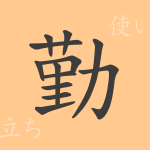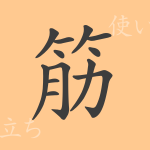The “koto” (琴(こと)), an instrument that allows you to touch the depths of Japanese tradition and culture. This ancient and beloved instrument has captivated many with its elegant sound and shape. However, the meaning, origin, and role of the koto in the Japanese language might not be as well-known. In this article, we will delve into the knowledge surrounding the koto, from its origin, meaning, usage, pronunciation, stroke count, and radical. Additionally, we will introduce idioms and expressions that use the koto, exploring how this instrument is embedded in the Japanese language.
Origin of 琴 (きん) (Origin)
The koto is a string instrument that originated in ancient China and was introduced to Japan during the Nara period. The word’s origin comes from the ancient Chinese word “Qin,” and it is said that the instrument was named “koto” because its sound reminded people of the music of the Qin state. The kanji “琴” combines “王” (king) and “今” (now). “王” has an aspect that means “jade,” and “今” is a modified form of “斤” (axe). Therefore, the kanji implies an instrument made by cutting jade with an axe.
Meaning and Usage of 琴 (きん)
The kanji “琴” literally means the musical instrument koto, but it also broadly signifies something that evokes music or poetry, or something that brings peace of mind. In Japanese culture, it is used in formal settings such as Gagaku (court music). Additionally, it is often represented in literature and poetry as a symbol of spirituality and artistry.
Pronunciation, Stroke Count, and Radical of 琴 (きん)
The kanji “琴” is a commonly used kanji in Japanese, and its characteristics are summarized below.
- Pronunciation: The on’yomi (Chinese reading) is “キン” and the kun’yomi (Japanese reading) is “こと”.
- Stroke count: The kanji “琴” has a total of 12 strokes.
- Radical: The radical is 玉(たま・ぎょくへん) (jade).
Idioms, Expressions, and Proverbs Using 琴 (きん)
Idioms, expressions, and proverbs related to the koto enrich the expressive power of the Japanese language. For example, “琴の音に聞く” (to listen to the sound of the koto) means to resonate with the heart, and “琴線に触れる” (to touch the strings of a koto) indicates a very close relationship. Additionally, “一弦の琴” (one-string koto) means something monotonous and is used when seeking diversity or complexity.
Conclusion on 琴 (きん)
The koto, through its history, cultural background, and as a kanji character, is deeply rooted in the lives and language of the Japanese people. As part of Gagaku and as an expression that moves the heart, the koto appeals to our sensibilities. Through this article, we hope you can appreciate the multifaceted charm and significance of the koto.

























